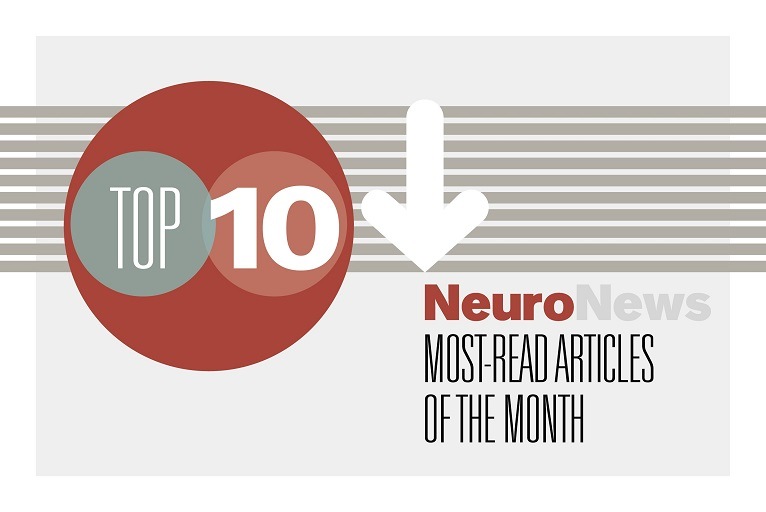 An exclusive interview with the North American Neuromodulation Society (NANS) president piqued the interest of NeuroNews’ readers through the first month of the year, as did fresh research into the possibilities enabled by new flow diverter devices, 3D-printed aneurysm models, and other novel neurovascular technologies.
An exclusive interview with the North American Neuromodulation Society (NANS) president piqued the interest of NeuroNews’ readers through the first month of the year, as did fresh research into the possibilities enabled by new flow diverter devices, 3D-printed aneurysm models, and other novel neurovascular technologies.
1. PROFILE: Salim Hayek
In light of his recent appointment as NANS president, we caught up with Salim Hayek (Cleveland, USA) to discuss his experiences and expectations in this role. Speaking to NeuroNews, Hayek also highlights a number of key trends that are shaping the landscape of neuromodulation and pain management right now.
2. Novel neuromodulation technique could be “gamechanger” in treatment-resistant depression
Stanford accelerated intelligent neuromodulation therapy (SAINT)—a novel, high-dose intermittent theta-burst stimulation (iTBS)—was found to be safe and more effective than sham stimulation in a recent randomised controlled trial (RCT). And, according to Nolan Williams, assistant professor within the Department of Psychiatry and Behavioral Sciences at Stanford University Medical Center in Stanford, USA, this technology has the potential to be a “gamechanger” for patients with major, treatment-resistant depression.
3. Latest data reinforce evidence on safety and effectiveness of Contour intra-aneurysmal flow diverter
Fresh data from the CERUS study—the first multicentre clinical trial evaluating safety and effectiveness outcomes with the Contour neurovascular system (Cerus Endovascular)—have indicated “encouraging results” in the treatment of unruptured intracranial bifurcation aneurysms.
4. First patient implanted in integrated spinal fusion and DRG stimulation proof-of-concept study
SynerFuse has announced the first implantation in the company’s proof-of-concept study evaluating the safety and tolerability of simultaneously implanting spinal fusion hardware and a dorsal root ganglion (DRG) neurostimulator in patients suffering from chronic lower back pain (CLBP).
5. Dedicated primary care can reduce stroke risk in seniors by more than a fifth, ChenMed study reveals
ChenMed has announced results from a three-year study of nearly 60,000 patients, showing 22% lower incidence of primary stroke among those having benefitted from a year or more of ChenMed care. The study compared outcomes for more than 40,500 tenured Chen, Dedicated and JenCare senior medical centre patients versus nearly 16,000 newer patients—those having fewer than 12 months of primary care from a ChenMed clinician.
6. ADVERTORIAL: Enabling new possibilities in stroke treatment with Stream technology
Kārlis Kupčs and Helmuts Kidikas of the Pauls Stradiņš Clinical University Hospital (Riga, Latvia) discuss their experiences with Stream (Perflow)—a range of dynamic neurothrombectomy net devices designed to give physicians greater control and visibility when treating ischaemic stroke—and outline data their centre has collected on this next-generation stent retriever.
This advertorial is sponsored by Perflow.
7. Study indicates aneurysm embolisation strategy can be optimised using 3D-printed, patient-specific models
Endovascular neurosurgery rehearsals using 3D-printed, patient-specific aneurysm models have demonstrated the ability to optimise embolisation strategy, as per the findings of a study published in Journal of Neuroradiology. This optimisation resulted in shorter procedure duration and cumulative fluoroscopy time, which translated to reduced radiation exposure compared to procedures performed without preprocedural 3D simulation, the authors note.
8. NIH launches first phase of US$9.8 million competition to accelerate development of neuromodulation therapies
The National Institutes of Health (NIH) has launched the first phase of the Neuromod Prize—a US$9.8 million competition to accelerate the development of neuromodulation therapies.
9. Bendit announces first-in-human use of Bendit21 neurovascular catheter in the USA
Bendit Technologies has announced the successful first use in the USA of its Bendit21 neurocatheter in a life-saving treatment. The case was completed at the University of Texas Southwestern (UTSW) Medical Center and involved a 57-year-old female patient who had been suffering for years from an inoperable, symptomatic internal carotid artery aneurysm.
10. Large real-world analysis deems Nerivio safe and effective in migraine treatment
Theranica has announced a new peer-reviewed study analysing the efficacy, safety and sustainability of remote electrical neuromodulation (REN) as a standalone, and medication-adjunct, treatment of migraine. The real-world evidence study, which is published in Frontiers in Pain Research, concludes that REN—administered via Theranica’s flagship product, Nerivio—performs well across all three of these parameters.











